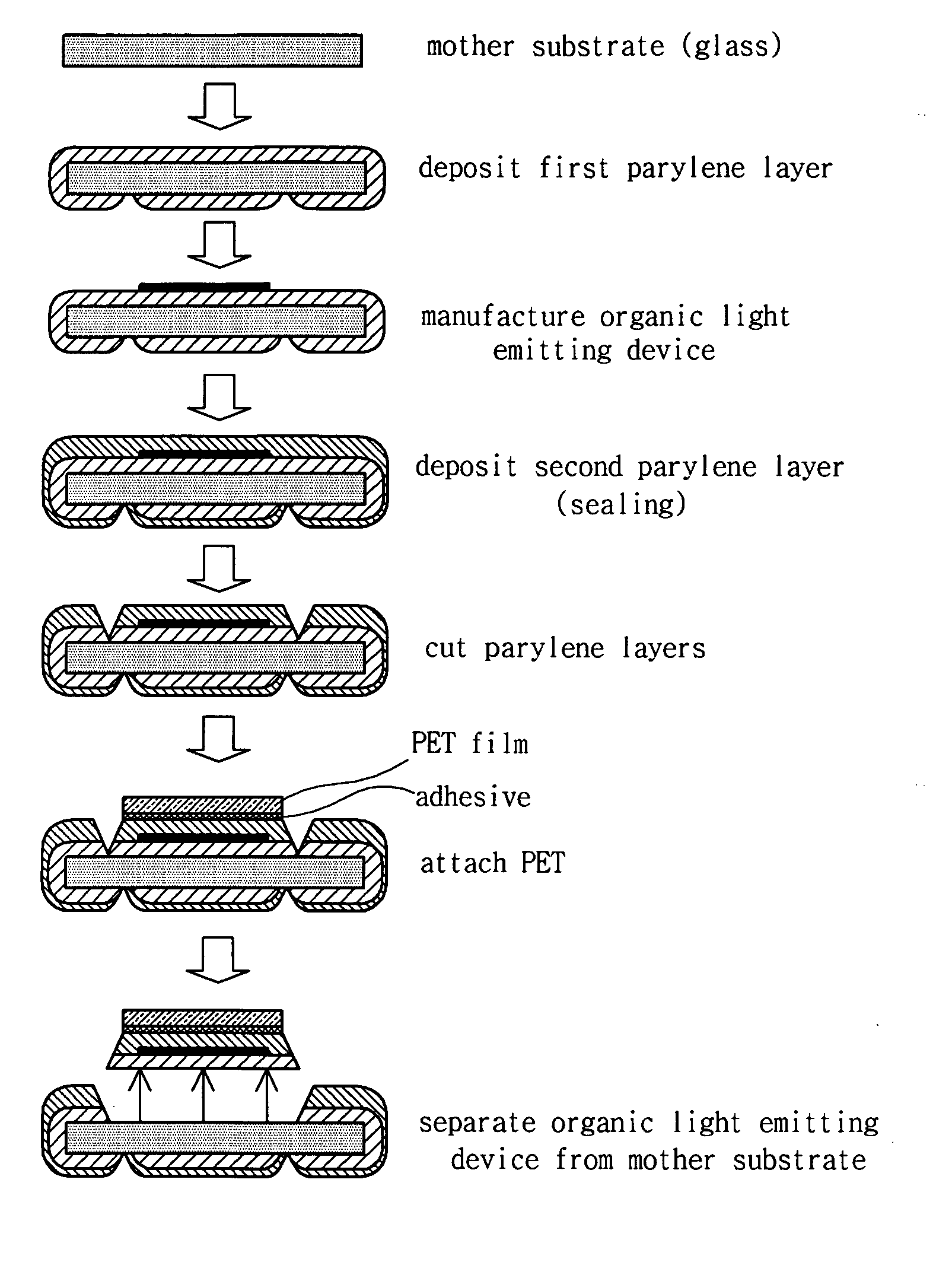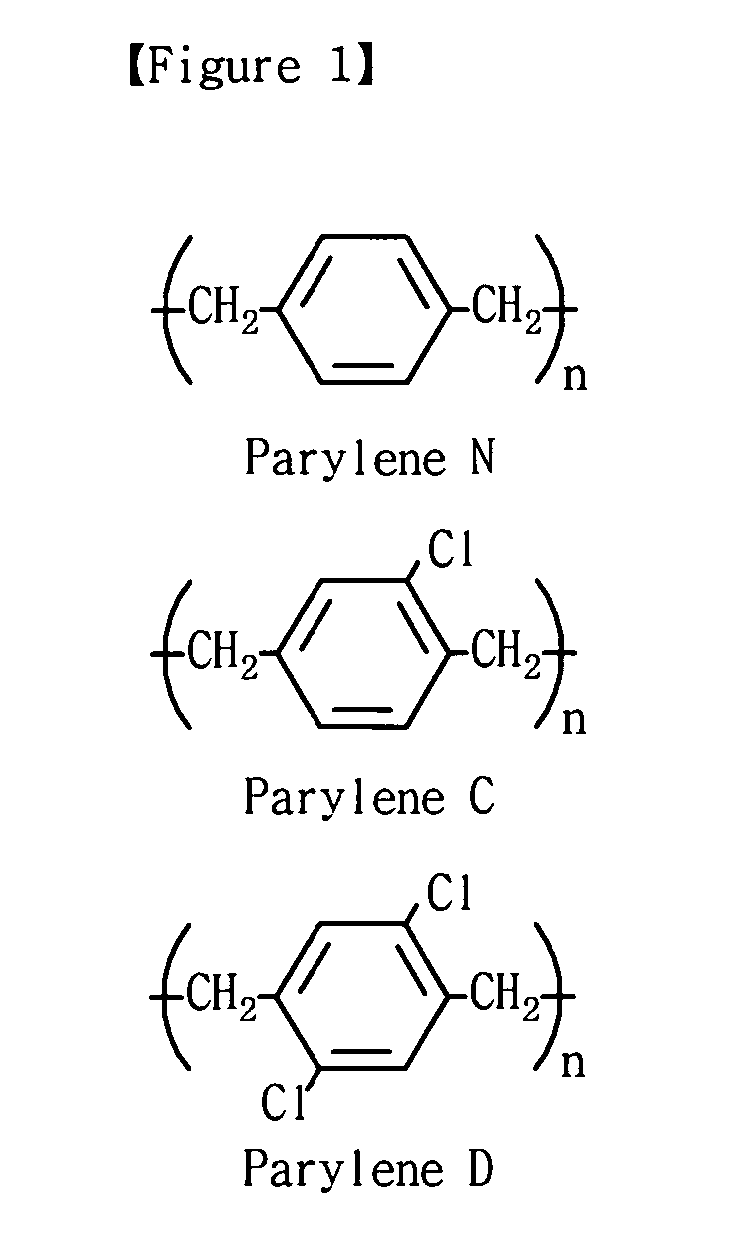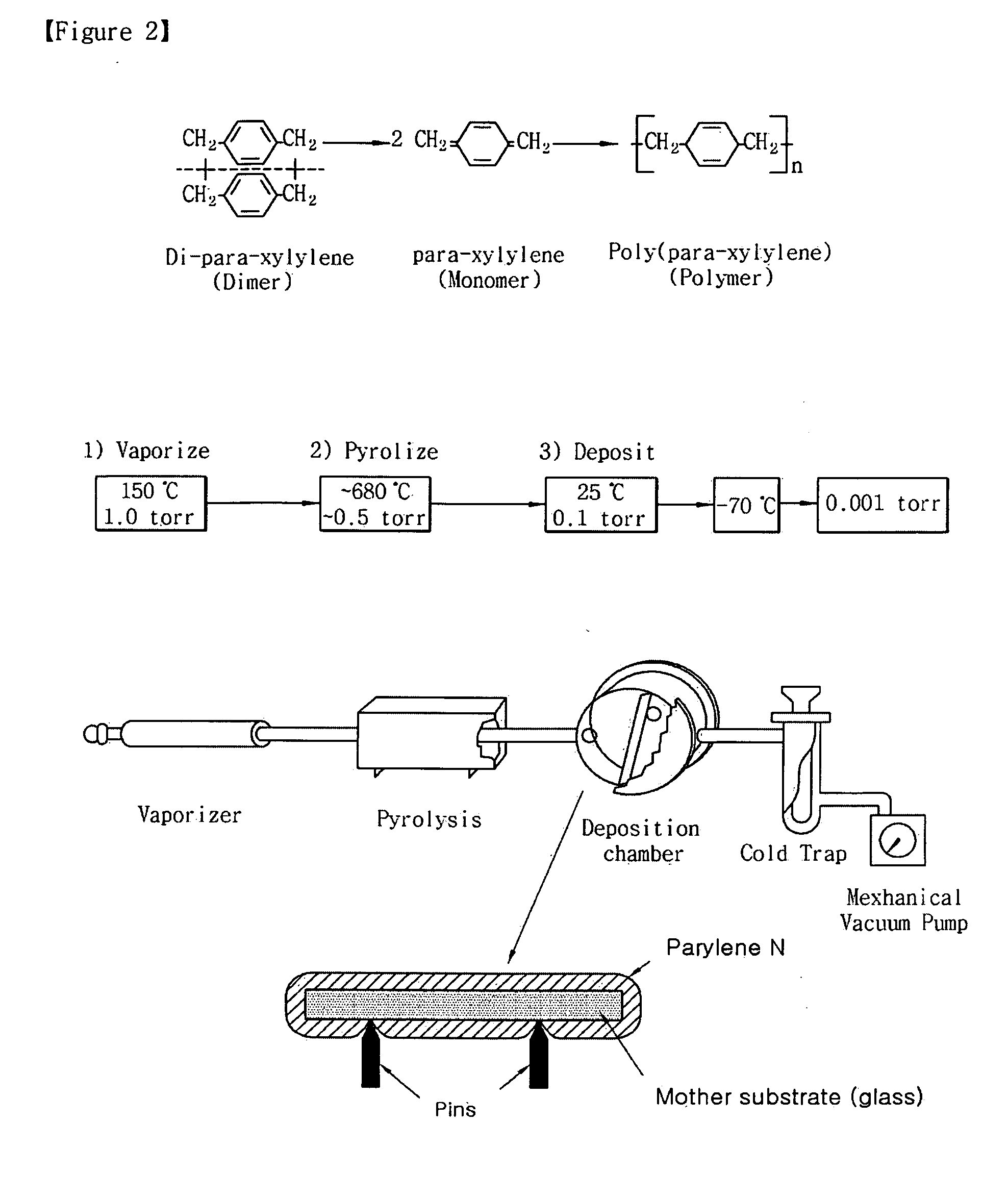Method of manufacturing device having flexible substrate and device having flexible substrate manufactured using the same
- Summary
- Abstract
- Description
- Claims
- Application Information
AI Technical Summary
Benefits of technology
Problems solved by technology
Method used
Image
Examples
first embodiment
[0040] Manufacturing organic light emitting device having flexible substrate according to first embodiment of the present invention
[0041] A glass substrate is used for a mother substrate, and parylene C is used for a substrate for manufacturing an organic light emitting device and a sealant.
[0042] The glass substrate, which is the mother substrate and has a size of 100×100 mm2, is initially cleaned using acetone and methanol. Then, the cleaned glass substrate is put into a parylene deposition apparatus. A first parylene layer is deposited to a thickness of 30 μm using a vapor deposition method in the parylene deposition apparatus. The parylene is deposited over the entire surface of the glass substrate, except for point contacts of three pins for supporting the glass substrate, which is the mother substrate. FIG. 2 is a conceptual view showing a parylene deposition process. After the first parylene layer is deposited over the mother substrate, an organic light emitting device is m...
second embodiment
[0047] Manufacturing device having flexible substrate according to second embodiment of the invention.
[0048] According to the first embodiment, the first and second parylene layers have a thickness of 30 μm, respectively. The device having a total thickness of 60 μm can be very easily bent, and is rather susceptible to damage. As a method of complementing this disadvantage and reducing deposition time of thick parylene layers, a flexible polymer film or a metal film may be additionally attached to one side or both sides of the device.
[0049] A method of manufacturing a device according to this embodiment is the same as the method according to the first embodiment until a first parylene layer, an organic light emitting device, a second parylene layer are formed on a mother substrate, and then the two parylene layers are cut. Here, the first parylene layer and the second parylene layer have a thickness of 10 μm, respectively. The parylene layers do not need to be thick because an add...
third and forth embodiment
[0054] Organic lighting emitting device having a flexible substrate is prepared by same process in the first and second embodiment except parylene N is used instead of parylene C as sealant material. Same results were obtained in the first and second embodiment.
PUM
 Login to View More
Login to View More Abstract
Description
Claims
Application Information
 Login to View More
Login to View More - R&D
- Intellectual Property
- Life Sciences
- Materials
- Tech Scout
- Unparalleled Data Quality
- Higher Quality Content
- 60% Fewer Hallucinations
Browse by: Latest US Patents, China's latest patents, Technical Efficacy Thesaurus, Application Domain, Technology Topic, Popular Technical Reports.
© 2025 PatSnap. All rights reserved.Legal|Privacy policy|Modern Slavery Act Transparency Statement|Sitemap|About US| Contact US: help@patsnap.com



